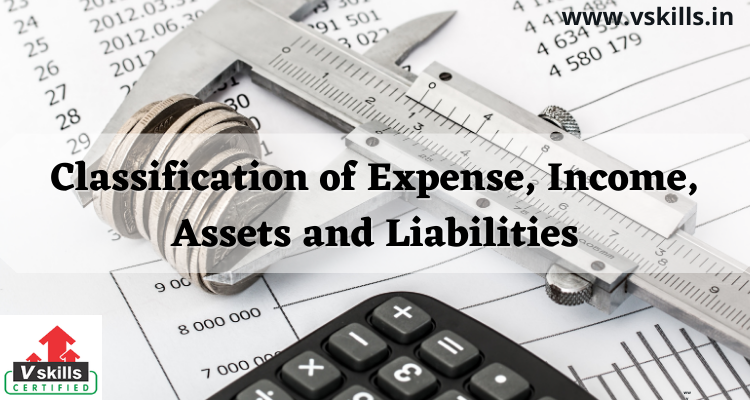Classification of Expense Income Assets and Liabilities
Classification of Expenses
The expenses can be classified into two major head that Direct Expenses & Indirect expenses.
- Direct Expenses: Expenses which are directly related to the production of material, like raw material purchase, direct labor, wages, carriage inward, etc in case of a manufacturing concern, Without these expenses the production of material is not possible.
- Indirect Expenses: These expenses are those which are incurred after the production of the goods. These include salary, insurance, rent, etc.
Classification of Incomes
Income has been divided into two main categories operating income and non-operating income.
- Operating Income: Income accruing to the organization in the normal course of business. Example: Sales of goods by trading or manufacturing concern.
- Non-Operating Income: Income other than operating income accruing to an organization. Example: Rent received, Interest on securities, etc.
Classification of assets
- Current Assets: These are those assets which are continuously circulated in the business to meet the day to day requirement and hence also called circulating assets, or assets which can be converted into cash within one year of time are known as current assets. For Example Cash, Sundry Debtors, O/S wages, Prepaid expenses, etc.
- Long-term Investment: These investments are to be held for many years and are not intended to be disposed of in the near future.
- Fixed Assets: Assets that are acquired for the purpose of establishment of the business entity and are acquired for relatively long periods for carrying on the business. Example: Goodwill, Plant, Machine, and furniture, etc.
- Tangible Assets: Assets which have physical existence or which can be touched are known as tangible assets. Example Plant and Machinery, buildings, furniture, etc.
- Intangible Assets: Assets that have no physical existence and cannot be touched are called intangible assets. For example Copyrights, trademarks, patents, goodwill, etc.
Classification of Liabilities
- Owner’s Fund: It represents the capital contributed by the owners together with retained earnings example: Share capital and General reserve
- Current Liabilities: The liabilities that can be settled within a normal operation cycle of a business are known as the current liabilities. Most of the current liabilities should be settled within a year’s time using the current assets. For Example Sundry Creditors, O/S Wages, Bills Payable etc.
- Long-term Liabilities: These represent the liabilities which have long repayment period. For example: Debenture, long term loan etc.



